Havana’s Colon Cemetery: Dying, Sleeping, Maybe Dreaming (video)
By Irina Pino
HAVANA TIMES – The Cristobal Colon Cemetery in Havana is a mausoleum of pain, a tribute to loved ones who have passed.
For those of you who don’t know it, it was inaugurated in 1871. It spans across 66 hectares and has four cardinal gates: north, south, east and west. In 1987, it was declared a national monument because of its great artistic value.
Art deco, Byzantine, Classic, Roman, Gothic and other styles coexist in perfect harmony in the cemetery’s architecture.
Carrara marble, copper, iron, wrought iron and stained-glass windows were used to build chapels, mausoleums, vaults and ossuaries. The cemetery’s funeral art is valued at some 1 billion USD.
Whenever we walk past it, even if we’re on the other side of the road, we try and avoid looking inside, as if a magnet were attracting us and could take our lives away in a second, and we’d have to stare Death in the face, feel his pale hand on our own, listen to its raucous voice whisper in our ear: your time has come!
There’s nothing wrong with walking through the cemetery, along its avenues, being enchanted with the beauty of its statues, which seem to be staring at us, or posing gracefully so we can admire them.
Countless crosses, made out of marble, iron and stone can be seen; tombstones with epitaphs corresponding to the deceased’s social status.
However, it’s not all beautiful. There are gloomy parts, with abandoned graves and darkened marble; some thrown out. You can smell death.
Nobody looks after this part of the cemetery, dry leaves pile up, memories dissipate in dust.
These are graves that nobody goes to visit, forgotten by living relatives, or those who no longer live on the island. A dark angel watches over them and pays them tribute.
My idea to film this video was a bit ambitious. I wanted to see so much, that I had to go twice; and even though I did, there was one grave I couldn’t locate: Cecilia Valdes’, a real figure who was recreated in Cirilo Villaverde’s novel.
Workers and a guide gave me the coordinates to reach this grave but I didn’t find it. I’m pretty sure that it’s just a myth, because some people who have been working there for a while now have never even seen it.
The story of two graves particularly caught my attention: that of Loyalty, dedicated to Jeannete Ryder, the founder of the Piety Group in Cuba; and La Milagrosa (the Miracle-Maker).
Word has it that Miss Ryder’s dog accompanied her funeral entourage and didn’t want to leave the place. Workers tried kicking him out and he kept coming back. The dog was so sad that he refused to eat. He finally passed away.
The Piety Group was so moved, that they ordered for a statue to be built of Miss Rydel with the dog lying at her feet.
La Milagrosa rests close to the main entrance, where there are always fresh flowers. There, devoted people ask for help when there are health problems; especially in children.
Young Amelia Goyri died in childbirth when she was just 23 years old. Her young daughter was buried at her feet, as was the tradition at the time. Her inconsolable husband never stopped visiting her. After several years, he wanted to see her for the final time: he found her corpse in good condition, and the child in her arms.
We can’t ignore the beautiful monuments to the Victims of Charity, in honor of the firemen who lost their lives at the Isasi hardware store in Old Havana; and the monument in tribute to the eight medical students who were unfairly executed by a firing squad of the Spanish.
I can tell those of you who are interested in visiting our cemetery that you will find living heritage everywhere inside; a paradox with its original purpose: death.
(Click on an image to display the gallery.)


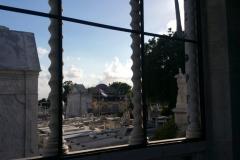

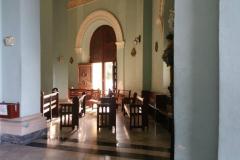
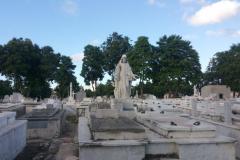

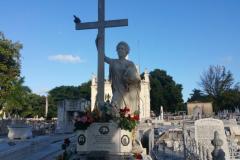
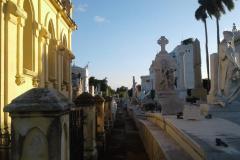

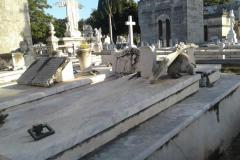

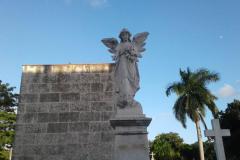
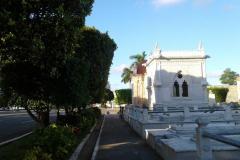
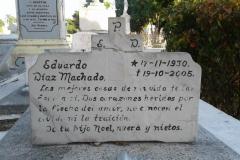
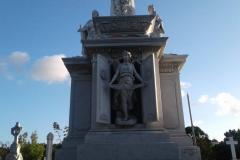
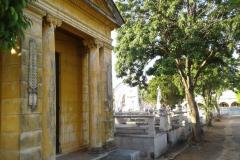
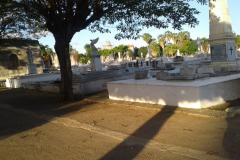
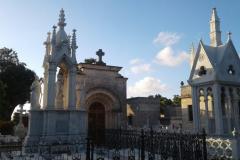

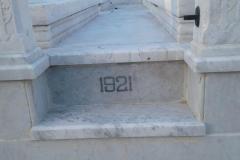
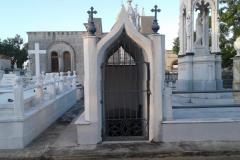
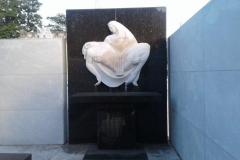
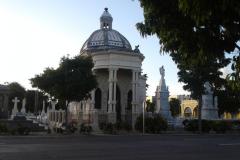






There are so many stories in that cemetery. Nice to see an article posted of this historical place.
Great Job Irina Pino. The Colon cemetery tells a lot about Cuban culture.